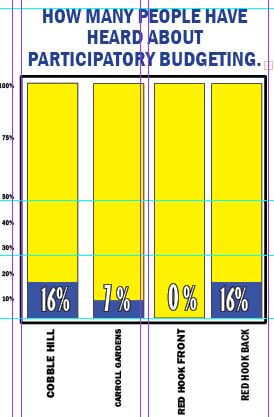Around ten years ago Councilman Brad Lander helped take an idea from Brazil and brought it to New York.
Every City Council member has about $5 million each year to distribute in their district as they please. This usually takes the form of grants to groups that may or may not support the politician, such as a Lion’s Club or a dance studio.
Participatory Budgeting was supposed to take a significant portion of this money and let locals pick the projects and then vote on them.
At the beginning, there were a number of projects created by community members who had fun ideas, and both Lander and Menchaca held public meetings where the projects were displayed, as you might see at a trade show.
That only happened a couple of times, and since then the projects have turned into funding of things that are or should be normal responsibilities of government.
For example, in the current year, just decided last month, the projects included the following:
Plant 100 New Trees on Third Avenue ($180,000): This project would plant 100 trees along Third Avenue in Greenwood Heights and Sunset Park to reduce air pollution from the Gowanus Expressway.
Summit Academy Charter School and PS 676 AV Room and Speaker System Upgrade ($650,000): This proposal would upgrade the intercom system at the two Red Hook schools.
New Trees with Tree Guards ($260,000): This project would plant trees with protective guards across the district.
Security Cameras along 7th Avenue ($600,000): This project would install surveillance cameras along Sunset Park’s Seventh Avenue, pending a study from New York’s Finest.
We have always wondered how many people actually participate, so our reporter Brian hit the streets for a couple weeks in April and asked people at random if they had ever heard of Participatory Budgeting.
Most hadn’t, but many remarked that it sounded like a good idea.
The results are summarized in the chart. The actual figures are 7 out of 44 in Cobble Hill; 9 out of 58 in Red Hook’s back (Van Brunt Street and Valentino Pier); none out of 24 in Red Hook’s front (by Public Housing); and 2 out of 27 in Carroll Gardens.









